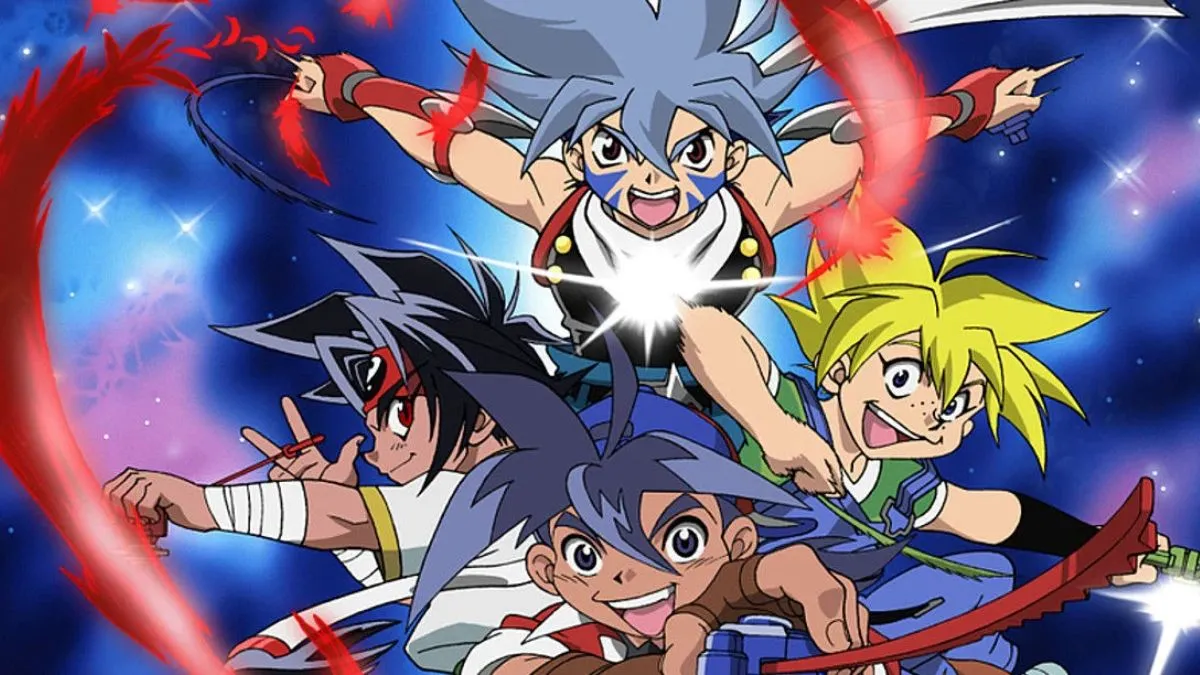In the realm of animated series that have captured the hearts of audiences around the world, Beyblade stands out as an iconic franchise that has enthralled generations with its unique blend of action-packed battles, compelling characters, and a deep emphasis on friendship and teamwork. Developed from a line of spinning top toys by Takara Tomy, the Beyblade anime first burst onto the scene in 2001 and quickly gained a dedicated fanbase that continues to grow to this day. Through its numerous seasons and spin-offs, the anime has managed to maintain its popularity by delivering exciting battles, relatable characters, and themes that resonate with viewers of all ages.
At its core, Beyblade revolves around a simple yet captivating concept: battles between spinning tops, each customized with distinct attributes and powers, in specially designed arenas known as BeyStadiums. These battles are more than just a clash of toys; they are a manifestation of the bladers’ skills, strategies, and emotional connections to their Beyblades. The show’s protagonist, typically a young blader, embarks on a journey to become the best in the world, pushing their limits and forming strong bonds with their teammates along the way.
One of the key strengths of the Beyblade anime lies in its diverse cast of characters, each with their own motivations, backgrounds, and distinct Beyblade styles. These characters are not just competitors; they are individuals with unique dreams and personal growth arcs. From Tyson Granger in the original series to Aiger Akabane in the more recent “Beyblade Burst” iteration, the audience witnesses the transformation of these bladers from rookies with raw talent to seasoned champions who have honed their skills through determination and hard work.
Friendship and teamwork are recurring themes in the Beyblade anime. Bladers often form tight-knit teams or squads that work together to overcome challenges and adversaries. The camaraderie displayed in these groups reflects the real-world importance of collaboration and support. As the characters learn to trust and rely on each other, they exemplify values that resonate with viewers, especially young audiences who can learn valuable lessons about the significance of friendship, unity, and mutual respect.
The battles themselves are the heart of the series, choreographed with intense energy and spectacular animations that keep viewers at the edge of their seats. The show’s ability to turn spinning tops into epic confrontations with strategic depth is a testament to its creative storytelling. The battles are not merely contests of brute strength; they require careful planning, understanding of Beyblade types, and the timely execution of special moves. The clashes are often accompanied by dazzling visual effects and dramatic music, enhancing the sense of excitement and engagement.
The franchise’s evolution is evident in the different “generations” of Beyblade series. The original series, known as “Beyblade: Let It Rip!” or “Bakuten Shoot Beyblade,” laid the foundation for the franchise with its introduction of the Bladebreakers team and their quest for supremacy. As the years went on, subsequent series like “Beyblade: V-Force,” “Beyblade: G-Revolution,” and “Metal Fight Beyblade” expanded the world and introduced new bladers, Beyblade types, and antagonists, adding layers of complexity to the storyline.
In the more recent “Beyblade Burst” series, the animation quality and storytelling continue to impress. This iteration introduces the concept of “Bursting,” where Beyblades can explode in battle, adding an extra layer of excitement to the matches. The characters in “Beyblade Burst” are relatable to today’s youth, dealing with contemporary challenges while upholding the franchise’s core values. The series also introduces innovative Beyblade designs and mechanics that keep the battles fresh and engaging.
The global appeal of Beyblade is undeniable, with fans spanning across countries, cultures, and age groups. The franchise has sparked international tournaments, where real-life bladers gather to compete and celebrate their shared passion for the sport. The anime’s universal themes of friendship, determination, and perseverance are likely factors that contribute to its enduring popularity.
In conclusion, the Beyblade anime has carved a unique place for itself in the world of animated series. From its humble beginnings as a toy line adaptation, it has evolved into a beloved franchise that continues to captivate audiences with its thrilling battles, relatable characters, and timeless themes. Beyond the spinning tops and flashy moves, the heart of Beyblade lies in its portrayal of the human spirit’s boundless potential when fueled by friendship, teamwork, and the pursuit of excellence. As long as these values remain relevant, Beyblade will undoubtedly keep spinning its way into the hearts of viewers for generations to come.

